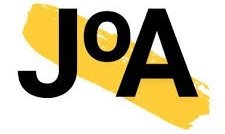In a paper published in The Journal of Architecture, NOMIS researcher Anna Myjak-Pycia explores how the Warsaw Uprising of 1944 repurposed the city’s sewer system as a vital means of movement and survival, transforming both the sewers and the people using them into crucial infrastructure. Myjak-Pycia’s paper offers a new interpretation of this appropriation, bridging infrastructural and periphery-center concepts, and expands architectural history by validating nonvisual sensory experiences and underrepresented spaces.
Abstract
During the Warsaw Uprising of 1944, soldiers and civilians used the city’s sewer system to move from place to place and to pass objects and information. Although many who entered the underground did not survive its conditions, the adoption of the sewer as a passage for people did save thousands of lives. Drawing on technical materials and testimonies of the survivors, the article examines this appropriation of the sewer system, concentrating on the way it functioned. It explicates how the reliance of the sewer’s adoption on the engagement of people turned them and their bodies into infrastructure, and how it led to augmenting the ontology of the sewer. The article offers a new interpretation of the Warsaw sewer appropriation and enriches the conceptual framework by bridging infrastructural notions with the periphery-centre concepts. Moreover, it advances research on ‘periphery’ by, firstly, counteracting the underrepresented and peripheral status of Eastern Europe in architectural history and, secondly, validating infrastructural spaces and broadening the scope of spaces included as interiors frequented by people. The paper also contributes to scholarship on spaces experienced largely through non-visual sensory modalities, an understudied area of architectural history due to the discipline’s rootedness in the domain of sight.

Read The Journal of Architecture publication: The peripheral interior and people as infrastructure: Adopting the sewer system for passage



